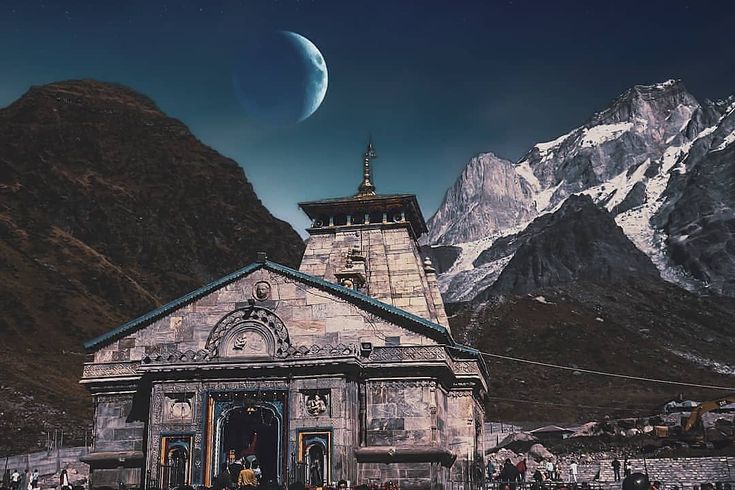Mailing List
Sign up for our mailing list to get latest updates and offers.
Nestled in the Garhwal Himalayas, Kedarnath is one of the most sacred destinations in India, revered by pilgrims and trekkers alike. Situated at an altitude of 3,583 meters, Kedarnath is not just a place of religious significance but also a site of astounding natural beauty. The towering snow-capped peaks, pristine rivers, and a sense of spiritual calm make it a must-visit for anyone seeking peace, adventure, or divine connection.
At the heart of Kedarnath lies the iconic Kedarnath Temple, one of the 12 Jyotirlingas of Lord Shiva. Believed to have been built by the Pandavas and later restored by Adi Shankaracharya, the temple stands as a testament to the devotion and resilience of Hindus. The temple’s structure, made of large stone slabs, is an architectural wonder given its remote location and harsh environment. Each year, thousands of devotees make the arduous journey to seek Lord Shiva’s blessings in this remote and peaceful abode.
The journey to the temple itself is a pilgrimage, requiring a trek of 16 kilometers from Gaurikund. Despite the challenges, the path is dotted with stories of faith and miracles, and the incredible landscapes serve as a reminder of the divine forces believed to be at work. As you ascend, the air becomes crisper, the views more breathtaking, and the spiritual energy palpable. The temple, set against the backdrop of the majestic Kedarnath peak, creates a powerful and humbling experience for anyone who visits.
For adventure seekers, Kedarnath is not just a pilgrimage but an opportunity to trek through some of the most spectacular landscapes in the world. The trek begins at Gaurikund and follows a well-defined trail through forests, waterfalls, and narrow gorges, providing panoramic views of the surrounding mountains. The weather can be unpredictable, but the thrill of the trek and the sense of accomplishment upon reaching the temple make it an unforgettable experience.

Along the way, there are several resting points with facilities for food and accommodation, offering trekkers a chance to recharge and soak in the beauty around them. The journey is not just physically challenging but mentally enriching, as each step brings you closer to both the temple and a deeper connection with nature.
The best time to visit Kedarnath is between May and October, when the temple is open to devotees. During these months, the weather is relatively pleasant, and the region is accessible. The temple closes for the winter months due to heavy snowfall, and the idol of Lord Shiva is moved to Ukhimath, where devotees can continue to offer prayers. However, the monsoon months (July to August) should be avoided due to the risk of landslides and floods.
For those looking to experience Kedarnath in a quieter setting, the months of May, June, and September offer a less crowded and more peaceful visit. The blooming rhododendrons and clear skies make it a picturesque time for trekking and photography.
Kedarnath gained international attention during the devastating floods of 2013, which claimed many lives and caused extensive damage to the region. The temple, however, miraculously survived the deluge, standing tall amidst the destruction. The disaster led to large-scale rebuilding efforts, with improved infrastructure and facilities for pilgrims and trekkers. Today, Kedarnath is not just a symbol of spiritual faith but also of human resilience and determination to rebuild against all odds.
The trekking routes have been restored, and the temple area has been fortified, making it safer and more accessible for visitors. While the tragedy of 2013 remains a painful memory, the way the region has recovered is a testament to the unshakable faith that surrounds Kedarnath.
What makes Kedarnath truly special is the spiritual energy that envelops the entire region. Whether you are standing in front of the ancient temple or gazing at the towering peaks, there is a profound sense of calm that permeates the air. The chants of devotees, the crisp mountain breeze, and the sheer magnitude of the natural surroundings evoke a deep sense of connection to something larger than oneself.
For many, visiting Kedarnath is more than just a religious pilgrimage; it is a journey of self-discovery and reflection. The isolation of the region, combined with its spiritual significance, creates an atmosphere where one can feel truly connected to the universe.
Kedarnath is more than just a destination; it’s an experience that transcends the physical journey. Whether you’re drawn to its religious significance, the challenge of trekking, or simply the beauty of the Himalayas, Kedarnath offers a journey that touches both the mind and the soul. As you make your way to this sacred place, you’ll find that the destination is not just a temple, but a deeper understanding of yourself and the world around you.